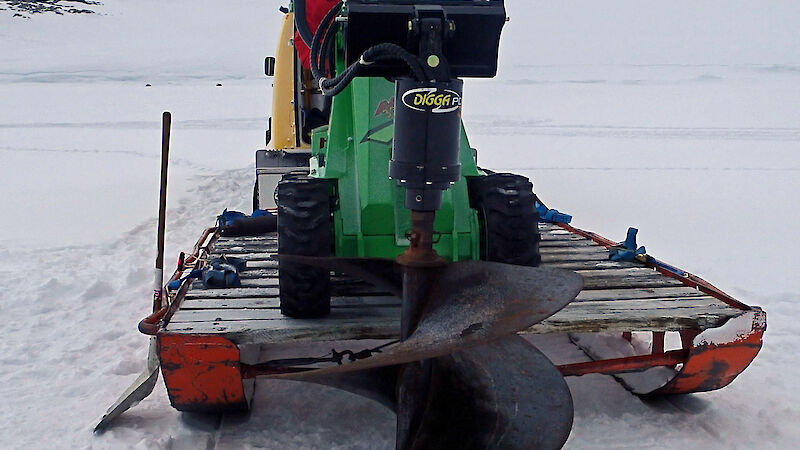We have drilled 2 dive holes at our Antarctic Free Ocean Carbon Enrichment (antFOCE) experimental site in OBrien Bay (locally known as OB1). The ice at the inner site (site A) is about 2.6m thick and the outer site (site B) is 1.5m thick, so it must have broken out at this site late last year after the reconnaissance team left. This may end up having some bearing on the site we choose, as we would prefer it not to break out, so the inner site might be better. It took several days to get these holes drilled due to some issues with our drill rigs. The inner site was very slow due to the extreme thickness but also very hard ice.
Glenn and I began diving on Thursday (26 Nov), which saw the usual teething problems with equipment and getting re-familiarised with diving in Antarctica. We dived only at site B, the outer site. The benthic habitat looks very good but it’s a bit deeper than the inner site and this will reduce dive times. There were several good places to put the chambers but some of them were well over 15m deep, which would mean a dive limit of 35 minutes for the first dive. So we will try and dive at the inner site (which is shallower) in the next few days, to make the final decision about where to stage the experiment.
The Science Technical Support team of Steve and Mark has been very busy setting up the equipment and we are almost ready to start deploying it. One of the first deployment tasks will be to transport the heavy surface equipment to the site (generator van and silver chalet — science van), which first has to be levelled and prepared for the vans. We also need an ice road groomed to the site as we have to go the long way around to OB1. The short route across the sea ice has been ruled out as the approach onto the sea ice is extremely icy and steep. So its a rather long trip out and back each day, about 40 mins each way.
The delicate surface equipment will go much slower and may take most of a day to get there, but the groomed road will make it a smoother journey with less bumps — some of the sastrugi are quite big. We hope to start deploying the underwater components next week. But there is always the A factor to deal with. We have blizzards forecast for the weekend and have had a few bad weather days already.
The rest of the team is out today doing familiarisation dives at the Casey wharf. It takes a few dives to get used to the conditions and equipment, especially for the first timers, but even for me. This is my 8th dive season in Antarctica and I still need a dive or two to get my gear sorted and become comfortable. There were some very uncomfortable moments yesterday. I was a bit cold before I went in the water (after long delays while dressed in dive gear) which resulted in freezing finger tips and being rather cool all over. So it was only a short dive of around 25 mins and we were out! But it was enough to have a good look at the site and find the settlement plates deployed last year.
Jonny Stark — Chief Investigator

